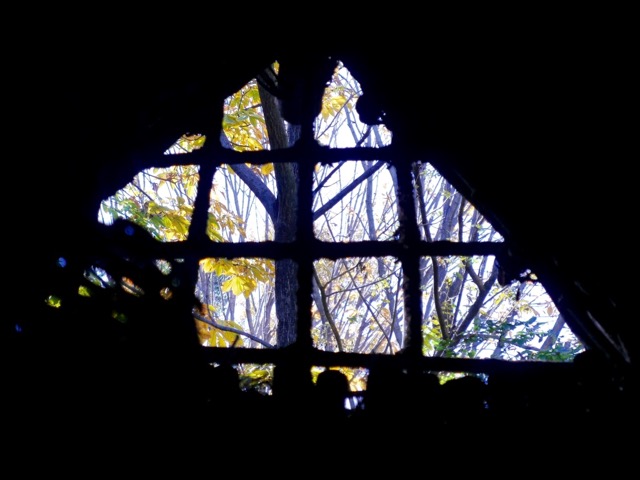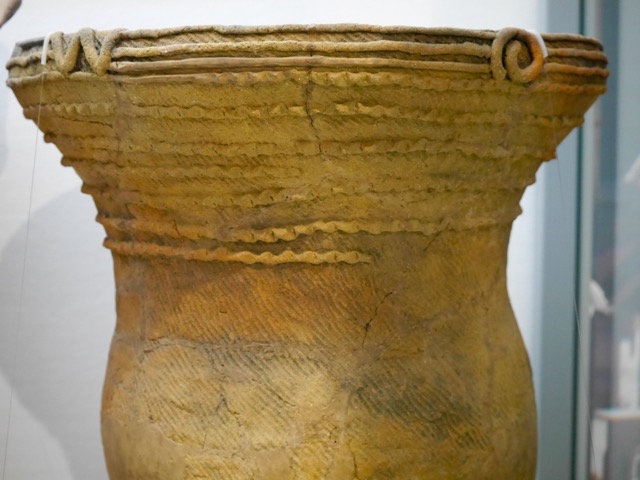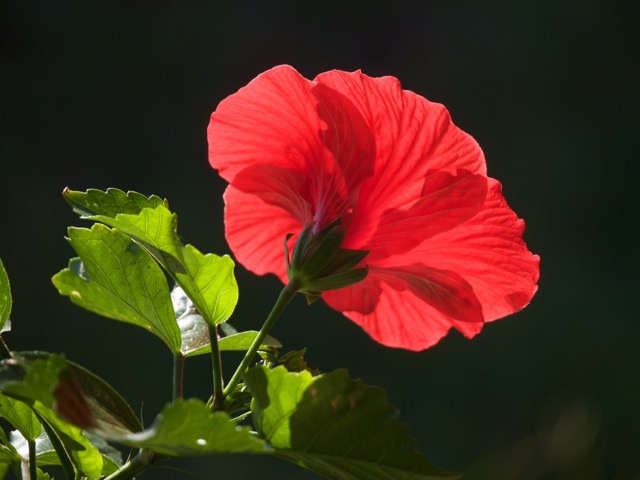Good morning!
We can enjoy the bright spring sunlight, especially after sittings. We have, however, a lot of problems with suffering. The Buddha told the parable of King Mirror (Ᾱdassa) summoning blind people to feel an animal and to report their findings. They said it was like a snake, a rope, a pillar, a wall, etc., and started quarrelling amongst themselves.
He also told a parable of a blind turtle living at the bottom of the ocean, coming up to the surface once in a hundred years and unwittingly sticking its head into a hole of a floating log, in order to tell how rare it is to be born as a human being. If we know this, we must attain unsurpassed awakening and unconditioned peace to fulfill it.
He taught us about our life in the Twelvefold Interdependent Co-origination, which shows the two roots of suffering in craving and nescience. Nescience (Pali: a-vijjā, Skt.: a-vidyā: Latin: a-video/videre) is no-witness of nirvana due to animal beings moving to appropriate/identify their psycho-physical beings.
Nescience is the fundamental delusion of a separate substantial self, becoming craving (taṅha, tṛṣṇā, lit. thirst, as if drinking sea water at shipwreck) and divisiveness (Pali: dosa, Skt.: dveṣa, Eng.: enmity: error, lit. duality). Delusion, desire, and divisiveness are the Triple Poisons, poisoning and killing, coming from karma.
The Buddha foresaw the destruction of the world due to them, and devoted his whole life to avoiding it by teaching the way to still karma (nirvana), to see dharma (norm of all forms: law of all phenomena: Dharma of I.C.), to serve and save all. Nirvana is expressed in different ways: śūnya, neither birth nor death, Blissful, etc.
This is the way for everyone to “come and see!” (ehi passika). He allowed anyone to join his way, saying “Ehi bikkhu!” (Come bukkhu). Bikkhu is not a simple beggar, but a seeker in nirvana/awakening, in the tradition of striver (Pali: samana, Skt.: śramaṇa). His last words were, “Strive without indolence!”
March 16, 2019
Note 1: Expressions of nirvana: suňňatā (Skt.: śūnyatā, emptiness, no separate substantial self or self-nature), a-saṅkhata (a-saṅsṛkta un-made), a-papaňca (a-prapaňno, projection/speculation/ fabrication/karma), a-mata (a-mṛta, no death), body-mind falling away, neither birth nor death, neither coming nor going, neither one nor many, neither continuity nor cessation, neither decrease nor increase, neither defiled nor undefiled, Bliss-ful (sukha-vatī, later identified as the Bliss-land, Paradise, Pure-land), etc., but also un-definable/describable (a-viyākata, a-vyavakṛta).
2: Awakened Way (Pali):
One Dharma (Eka-dhamma): Dharma of Interdependent Co-origination
Two Islands/Refuge (Dvi-dīpa): Self-island (attan-dīpa), Dharma-island (dhamm- dīpa)
Twofold Way (Dvi-magga): Seeing Way (dassana-magga), Cultivation Way (bhāvanā-magga)
Triple Treasures/Refuges (Ti-rataṇa, -saraṇa): Buddha, Dharma (Dhamma), Sangha
Triple Learning (Ti-sikkhā): Morality (sīla), concentration (samādhi), prognosis (paňňā, prajňā)
Fourfold All-embracing Matters (Saṅgaha-vattu): giving (dāna), loving words (piya-vacana), beneficial action (attha-cariyā/artha-kṛtya), sameness (samana-arthatā/samana-arthatarthatā)
Fourfold Immeasurable/Brahma-abode (Apramana/Brahma-vihāra): friendship (mettā), compassion (kaluyāna), joy (mudita), equanimity (upekhā)
Fourfold Potency Bases (Iddhi-pāda): desire (chanda), striving (viriya), mind (citta), investigation (vīmaṁsā)
Fivefold Faculties/Powers (Indriya/Bala): faith (saddhā), striving (viriya), mindfulness (sati), concentration (samādhi), prognosis (paňňā)
Sixfold Perfections (pāramitā): giving (dāna), morality (sīla), patience (kānti), striving (viriya), concentration (samādhi), prognosis (paňňā)
Sevenfold Awakening Limbs (Bojjhaṅga): dharma analysis (dhamma vicaya), mindfulness (sati), striving (viriya), joy (pīti), lightness (passaddhi), concentration (samādhi), equanimity (upekkhā)
Eightfold Holy Ways (Ariya-magga): right view (sammā diṭṭhi), right thinking (sammā saṅkappa), right speech (sammā vacī), right action (sammā kammanta), right livelihood (sammā ājīva), right striving (sammā viriya), right mindfulness (sammā sati), right concentration (sammā samṭdhi)
Eightfold Consideations/Awakenings of Great Persons (Mahā-purisa-vitakka/-bodhi): little desire (appiccha), contentment (santuṭṭha), seclusion (pavivitta), striving (viriya), mindfulness (sati), concentration (samāhia), prognosis (paňňā), no speculation (appapaňca)
お早うございます!
明るい春の陽光を、特に坐禅の後では、享受できます。私達は、しかしながら、苦を伴う沢山の問題を抱えています。釈尊は鏡面王が盲人達を呼んである動物を触らせそれが何かを報告させる喩話をされました。彼らはそれが蛇、縄、柱、壁の様だと言い合い、喧嘩を始めました。
釈尊は又海底に住む盲亀が百年に一度海面に上がり思いもかけず浮木の穴に頭を突っ込む喩話をして人間として生まれる事が如何に稀有なことかを告げられました。もし私達がこれを知ればそれを全うする為に無上正覚と無碍の平和(涅槃)を達成しなければなりません。
釈尊は十二支縁起で私達の生活について教えられましたが、それで苦の二根は渇愛と無明にあることを示されました。無明(パーリ語: a-vijjā, 梵語: a-vidyā: ラテン語: a-video/videre)は動物が自らの身心存在を所有・自己同定することにより涅槃を確証できないことを意味します。
無明は「分離し実体のある自我」という根本幻想(迷惑)であり、これが渇愛(taṅha, tṛṣṇā, 原義: 難破して海水を飲むような「渇き」) と怒り (dosa, dveṣa、原義:二元性:英語:duality)となるのです。貪瞋痴は三毒として毒し、殺すことになり、業に由来するものです。,
釈尊はこれらによる世界破滅を予見して生涯を、業を静め(涅槃)、法(諸法の法:一切現象の法則:縁起法)を見て、一切に奉仕し救う方法を教えて、それを防ぐ為に献身されました。涅槃は空、不生不滅、極楽など異なる方法でも表現されています。
これは誰にとっても「来て見よ」(ehi passika)の道です。彼は誰でも「比丘よ善く来た!」(善来比丘)と自らの方法(覺道)に参加すること(入門・得度)を許しました。比丘とは単に食を乞う乞食ではなく精励者(沙門:samana, Skt.: śramaṇa)の伝統を受けた涅槃・覚醒の求道者のことです。彼の最後の言葉は「不放逸にして精進せよ!」でした。
2019共通年3月16日
註 1:1: 涅槃(nirvana)の同義語: 空(パーリ語:スンニャタ―:suňňatā,梵語:シューニャター: śūnyatā, 分離・孤立の恒常・実体の「自我」というものは無い:無我), 無為(アサンカタ:a-saṅkhata , アサンスクリタ:a-saṅsṛkta、英語: un-made), 不戯論(アパパンチャ:a-papaňca, アプラパンチャ:a-prapaňca, 無投影・戯言・造作・業), 不死(アマタ:a-mata , アムリタ:a-mṛta), 身心脱落、不生不死、不去不来、不一不異、不常不断、不増不減、不垢不浄、極楽(スッカヴァティ-:sukha-vatī, 原義:楽に満ちた:後に楽土・浄土などとして場所とされた)などだが、無記(叙述不可能, 超言説, アヴィヤーカタ:a-viyākata, アヴィアヴァクリタ:a-vyavakṛta)ともされる。
2: 仏道・覚道 (カッコ内はパーリ語):
一法 (エーカ・ダンマ:Eka-dhamma): 縁起法
二洲・依所 (ドゥヴィ・ディーパ:Dvi-dīpa): 自洲 (アッタン・ディーパattan-dīpa), 法洲 (ダンマ・ディーパdhamm- dīpa)
二道 (ドゥヴィ・マッガ:Dvi-magga): 見道 (ダッサナ・マッガdassana-magga), 修道 (バーヴァナ・マッガ:bhāvanā-magga)
三宝・帰依 (ティ・ラタナ, サラナ:Ti-rataṇa, -saraṇa): 仏、法 (Dhamma), 僧(サンガ:Sangha: 僧伽の略)
三学 (ティ・スィッカー:Ti-sikkhā): 戒 (スィーラ:sīla), 定 (サマーディ:samādhi), 慧 (恵、般若:パンニャー:paňňā,プラジニャー: prajňā)
四摂事 (チャットゥ・サンガ・ヴァットゥ:Saṅgaha-vattu): 布施 (ダーナ:dāna), 愛語 (ピヤ・ヴァチャナ:piya-vacana), 利行 (アッタ・チャリヤー:attha-cariyā、アルタ・クリトゥヤ:artha-kṛtya), 同事 (サマナ・アッタター:samana-atthatā, サマナ・アルタター:samana-arthatarthatā)
四無量・梵住 (チャトゥ・アッパマーナ:appamāṇa, アプラマーナ: pramana/Brahma-vihāra): 慈 (メッタ-:mettā, マイトリー:maitṝ), 喜 (ムディター:muditā), 捨(ウぺーカー:upekhā, ウぺークシャー:upekṣā)
四超能力:意欲 (チャトゥ・イッディパ-ダ:iddhi-pāda) : 欲求(チャンダ:chanda), 精進 ヴィリヤ:viriya), 意思(チッタ:citta), 探求(ヴィ―マンサー:vīmaṁsā)
五器官・力 (パンチャ・インドリヤIndriya/バラBala): 信念 (サッダー: saddhā), 精進 (ヴィリヤ:viriya), 専念 (sati), 集中(三昧)(サマーディ:samādhi), 智慧(般若)(パンニャー:paňňā)
六波羅蜜(完成) (チャ・パーラミー:pāramī, 梵語パーラミター: pāramitā):
布施(ダーナ : dāna), 戒律 (スィーラ: sīla), 忍耐 (カーンティ:kānti), 精進 (ヴィリヤ:viriya), 集中(三昧) (サマーディ:samādhi), 智慧(般若) (パンニャー:paňňā)
七覚支(サッタ・ボージャンガ:satta-bojjhaṅga): 法分析 (ダンマ・ヴィチャヤ: dhamma vicaya), 専念 (サティ: sati), 精進 (ヴィリヤ:viriya), 喜悦 (ピーティ: pīti), 軽安 (パッサッディ: passaddhi), 集中(三昧) (サマーディ:samādhi), 平静(捨離)(ウぺーカー:upekkhā)
八聖道 (アッタ・アリヤ ・マッガ: aṭṭha-ariya-magga): 正見 (サンマ―・ディッティ: sammā diṭṭhi), 正思 (サンマ―・サンカッパ:sammā saṅkappa), 正語 (サンマ―・ヴァチー:sammā vacī), 正行 (サンマ―・カンマンタ: sammā kammanta ), 正命 (サンマ―・アージーヴァ: sammā ājīva), 正精進 (サンマ―・ヴィリヤ: sammā viriya), 正念(サンマ―・サティ:sammā sati), 正集中(三昧) (サンマ―・サマーディ:sammā samṭdhi)
八大人慮/大人覚 (アッタ・マハー・プリサ・ヴィタッカ: aṭṭha-mahā-purisa-vitakka/マハー・プリサ ・ボーディ: -bodhi): 小欲 (アピッチャ: appiccha), 知足 (サントゥッタ: santuṭṭha), 離俗 (パヴィヴィッタ: pavivitta), 精進 (viriya), 専念 (sati), 集中(三昧)(サマーヒタ: samāhia), 智慧(般若) (パンニャー:paňňā), 不妄想(不戯論)アパパンチャ: appapaňca)
Pit-house reconstructed of Jomon Period
in Tama in Tokyo (30,000~20,000 B.C.)
From Inside of the Pit-house
Earthenware with straw rope pattern
used by Jomon people
Quietly Hidden in Deep Mountain
奥山にひっそりと
Lake Surface
湖面
Receiving Sunlight
陽を受けて
The above pictures were taken by Mr. Noriyuki Otsuka
exhibited at Shimoda Culture Center






